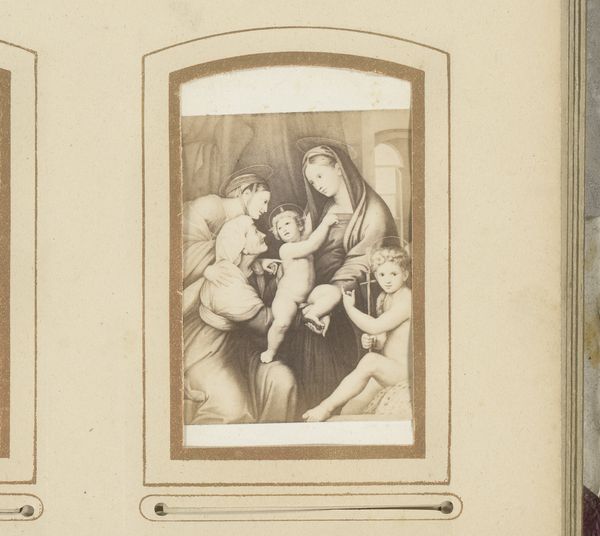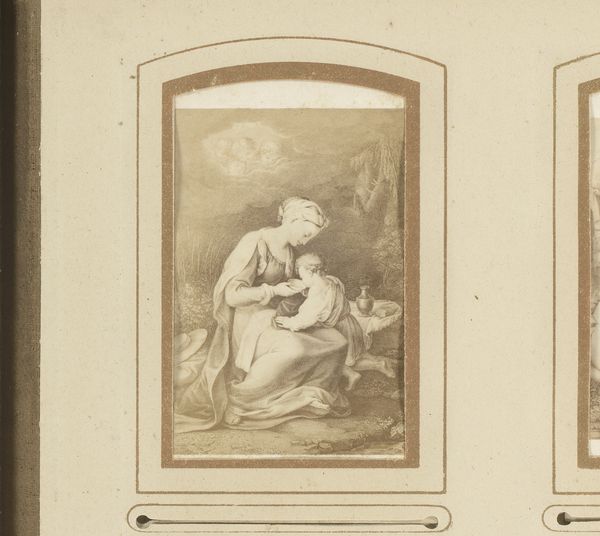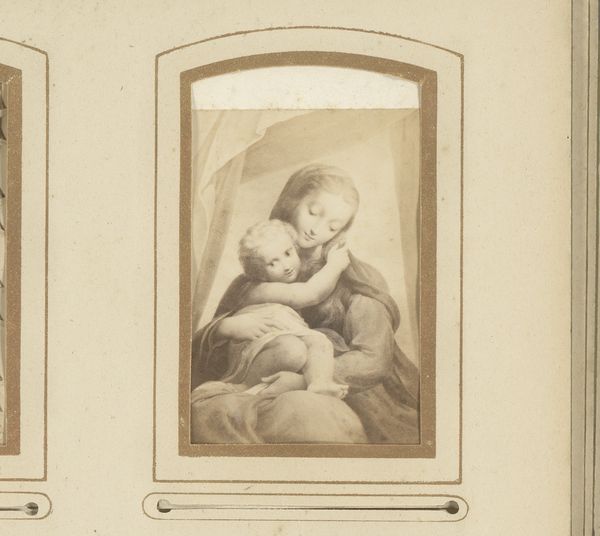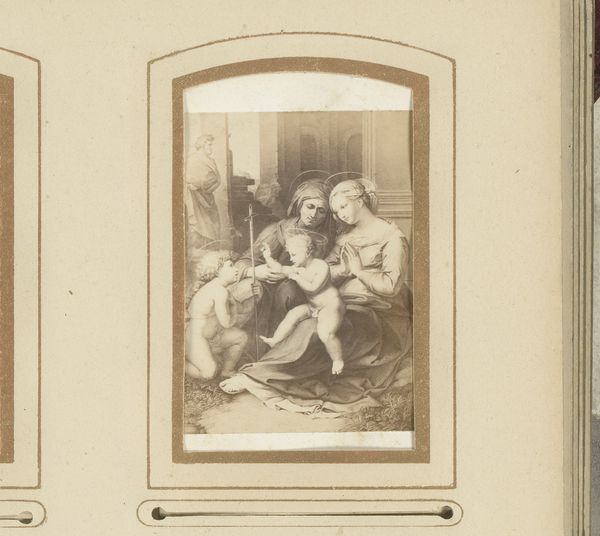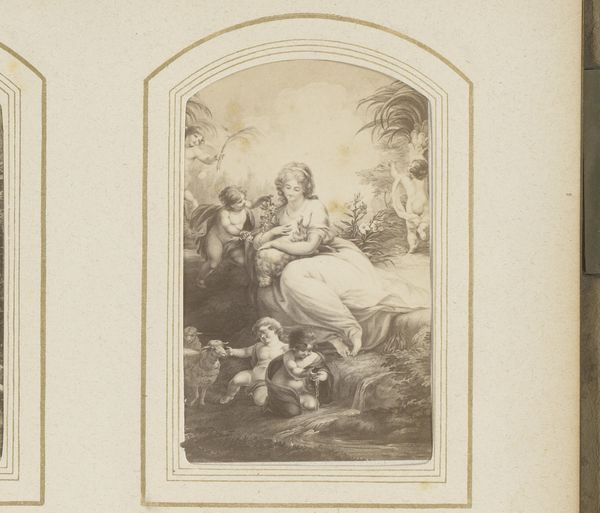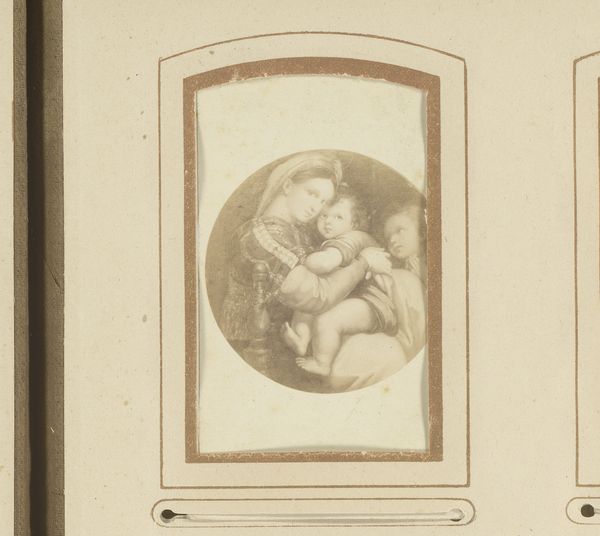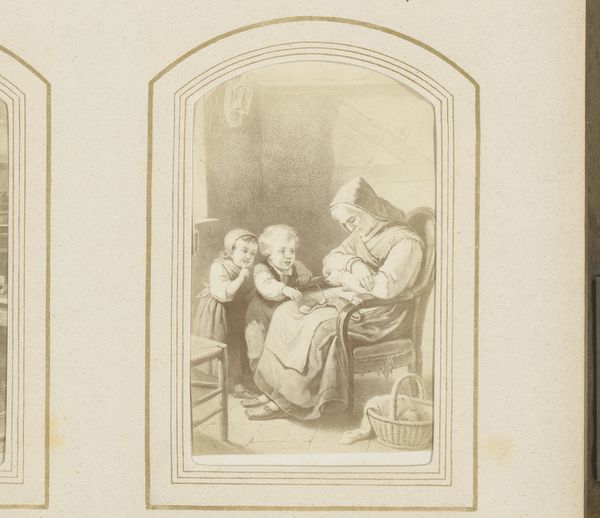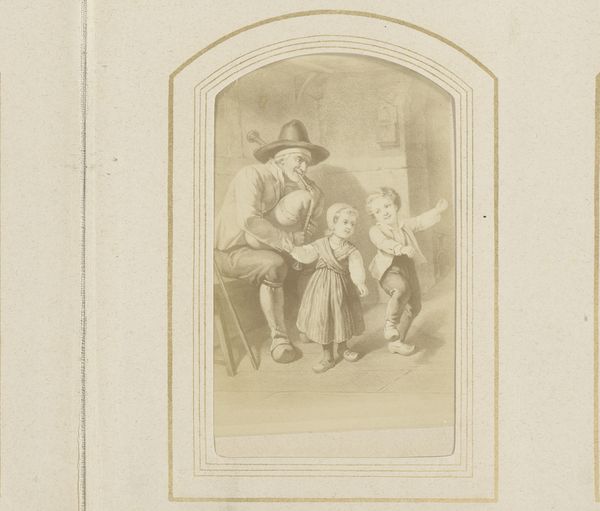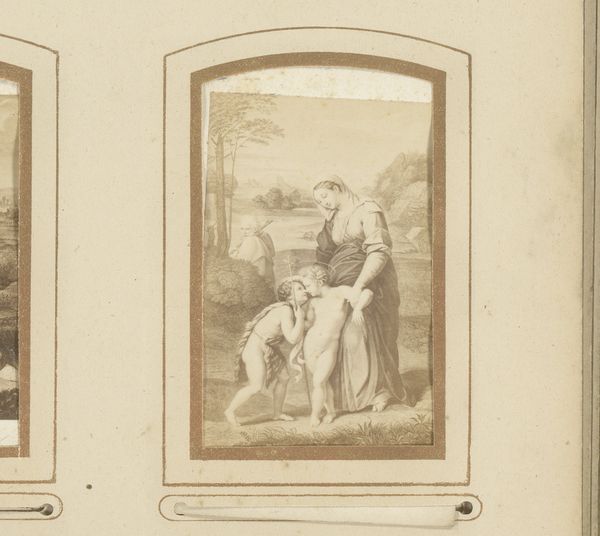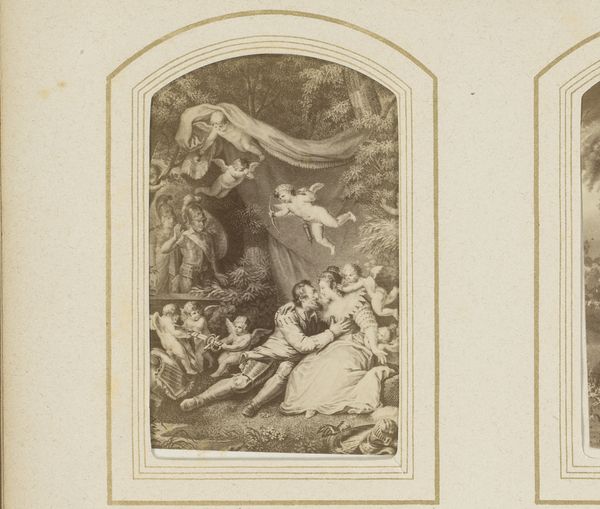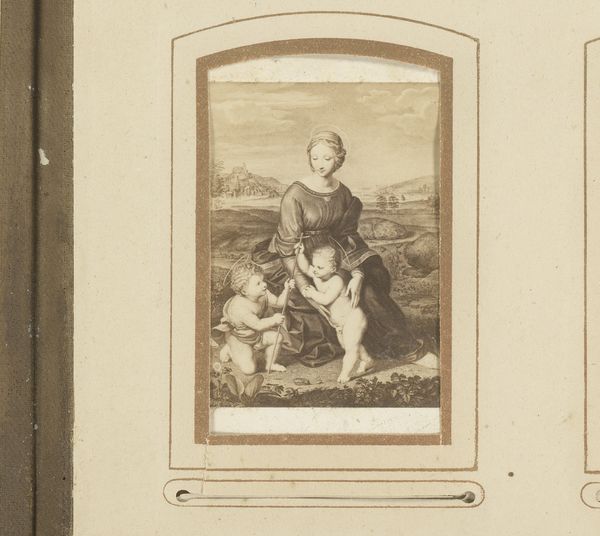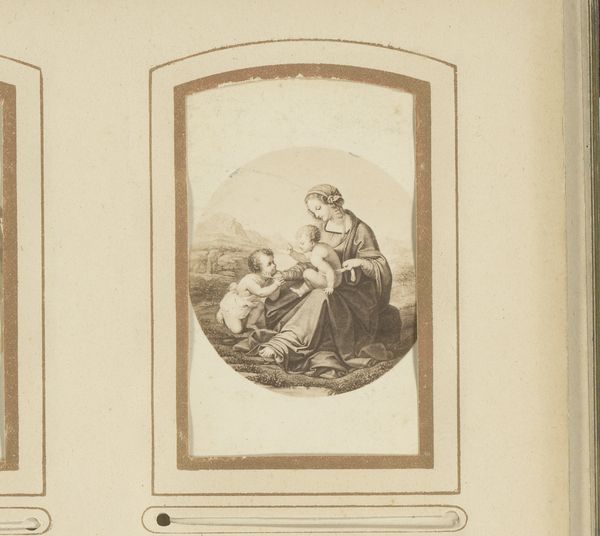
print, photography
#
portrait
# print
#
figuration
#
photography
#
academic-art
#
italian-renaissance
Dimensions: height 81 mm, width 50 mm
Copyright: Rijks Museum: Open Domain
Editor: Here we have a photographic print from between 1850 and 1900 after Raphael’s "The Holy Family." The figures look so soft. I’m struck by the way it’s been framed. What do you see in this image, and its creation? Curator: What I see is a conversation—a reproduction of a Renaissance painting through the lens of 19th-century photography. Consider the social function of images like these. Were they intended for devotional use, aesthetic appreciation, or perhaps even as a tool for reinforcing societal expectations about family and motherhood? Editor: So, this image isn't just about art; it's about culture and how people wanted to portray themselves. Curator: Exactly. The Italian Renaissance had a profound impact on the vision of idealised family, and photography became a powerful tool for disseminating this vision throughout society. Who was the original audience of Raphael, and how does it compare to those that acquired these photographic prints? Editor: The wealthy, probably. And later, this image could reach a broader audience with new photography? Curator: Yes, and what messages were being absorbed by them. Images can reproduce or question the social, political and cultural values. Consider also gender roles represented: the serene Madonna, the active child, the figures in contemplative pose. This constructs an idealised vision of motherhood and childhood. Editor: I hadn’t thought about it that way, more of a social statement, and less of art. It shows that art is more involved and can be about people in various societies. Curator: It’s a fusion of all. An image like this reflects not only the artistic talent of the artist, in this case, Raphael, but also the values, anxieties, and aspirations of the society that produced and consumed it.
Comments
No comments
Be the first to comment and join the conversation on the ultimate creative platform.
